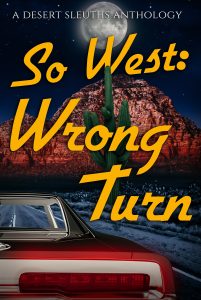The Marriage Bargain by Jennifer Probst is next up on our 100 Bestsellers List reading challenge. As a romance, The Marriage Bargain provides the reader with a modern day tale of a marriage of convenience, a bargain agreed upon by two adults for reasons having nothing to do with love. What can go wrong?
This post does not contain spoilers.
The Marriage Bargain* by Jennifer Probst
Romances
If you are looking for a light-hearted romantic romp in some expensive surroundings with a good bit of sexual heat, then The Marriage Bargain might just be the ticket. I usually prefer historical romances, as I’m often more interested in the historical settings and times than in the sexual heat of the story. Even so, this story kept my attention to the end, with only the occasional skimming through the sex scenes. The characters were engaging and there were enough twists and turns to keep me suitably engaged.
Cliches Everywhere
In a romance, cliches (or the Tropes that Roberta wrote about) are to be expected, but I thought Probst did a good job of presenting a fresh take on some of the more obvious cliches. I enjoyed the interplay between animal-hating Nick and animal-loving Alexa, especially when Alexa tried to hide from Nick a room full of dogs from the animal shelter. Seriously, what could go wrong there?
There was really only one section where I actually cringed. Nick goes to a poetry reading and upon seeing Alexa across the room, thinks:
Her true sexiness lay in her ignorance of her effect on men.
It’s not the first time I’ve read such a statement. Lately, though, when I see this and similar statements, I have to wonder why anyone would think that true sexiness can only be evident when the woman is least aware of her sexuality. The idea persists that a woman cannot be sexy and still worthy, that somehow knowing she is sexy diminishes her in some way. Unfortunately, this dichotomy continues to persist in the romance novel world.
Billionaire Series
The Marriage Bargain is the first novel in The Billionaire Marriage trilogy. I was interested enough to find out what happens to Nick’s sister and Alexa’s best friend Maggie May that I read the next in the series, The Marriage Trap, which I actually liked a bit more than The Marriage Bargain. In The Marriage Trap we meet up again with Nick’s business partner, Michael Conte, and are then introduced to all of Michael’s Italian family, so there are quite a few more characters in this second novel of the series. These new characters, plus the fact that this book was set mostly in Italy, made it all the more enjoyable. I now need to read book 3 in the series, The Marriage Mistake, as it concerns Michael’s youngest sister, Carina Conte. Writing a series where the characters are related is obviously a good way to ensure readership!
Do you enjoy reading romances? If so, do you have a particular type you enjoy?
Related posts:
- Book-beginnings, a discussion of the first line of the novel
- Karen’s review from a reader’s perspective
- Roberta’s review from a writer’s perspective
You can also join us on social media:
- The Bestseller Code 100 Pinterest Page
- Twitter: #BestsellerCode100
- Facebook: Bestseller Code 100 Reading Group
- The full list is now posted on GoodReads
Have you written about The Marriage Bargain by Jennifer Probst? Feel free to add a link to your review in the comments.
__________________
What are we reading next?
If you ever have questions about what we are reading next or when we’re starting the next discussion, check the 100 Book List tab in the navigation bar at the top of the blog. Links in the list go to the landing page from this blog where the discussion starts. However, this is an open-ended challenge so feel free to jump in with any of the books at any time.
The next book is number 71. The Bourne Betrayal by Eric Van Lustbader (2007) – Discussion begins December 11, 2017
Thriller













